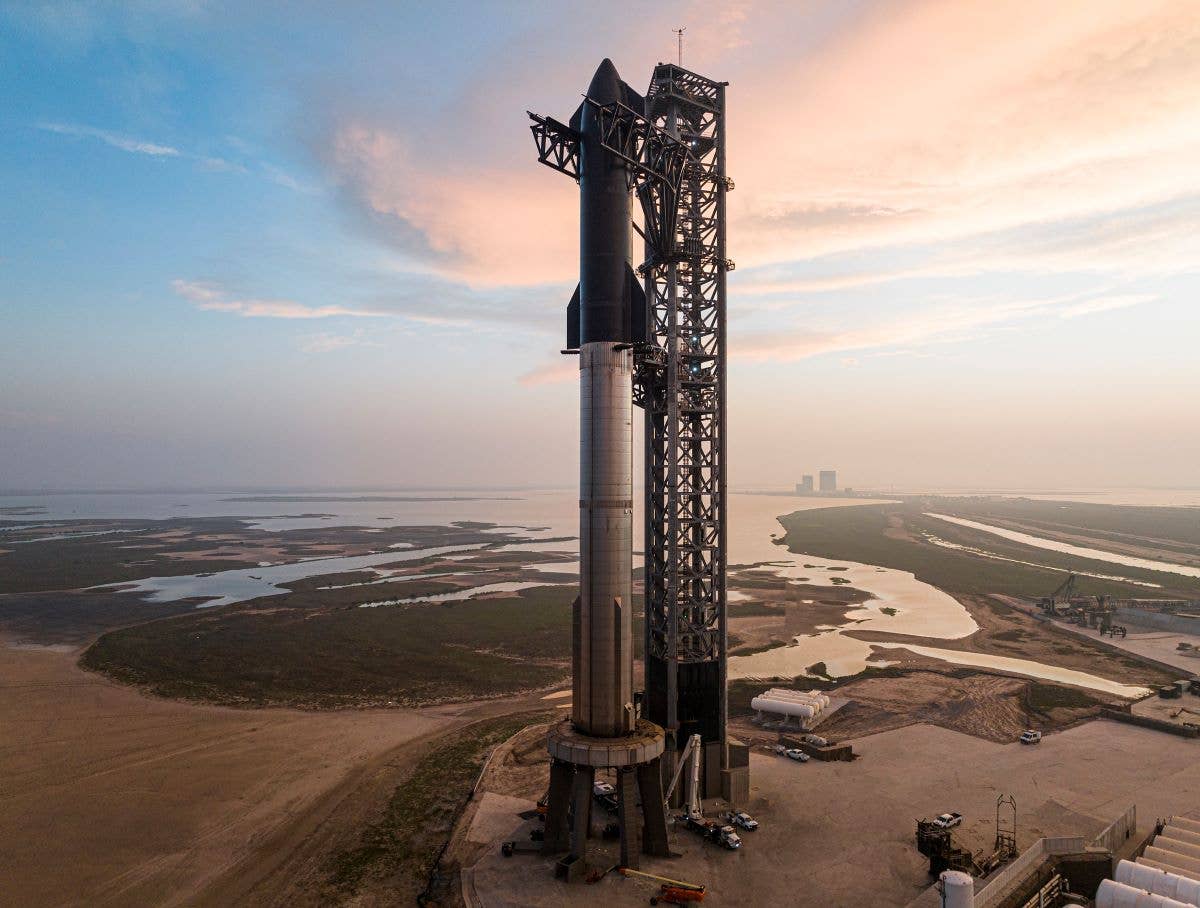SpaceX’s Starship Rocket Explodes Minutes After Launch
By Elon Musk’s standards, Thursday’s test flight was “a success.”

SpaceX called the event a “rapid unscheduled disassembly.” [Credit: SpaceX]
SpaceX’s long-awaited test launch of Starship—the largest and most powerful rocket ever constructed—both started and ended in flames.
The 400-foot-tall rocket and booster departed the company’s Starbase launchpad in Boca Chica, Texas, bombastically, leaving a trail of ignited propellant in its wake.
But a few minutes into the orbital test flight, as Starship’s super heavy booster was preparing to separate from the rocket, the spacecraft exploded, sending a ball of fiery debris hurtling into the Gulf of Mexico. The mission was uncrewed, so no humans were on board.
My Autotrack software captures the moment that Starship lost control. Excitement was very much guaranteed. Great first attempt by the SpaceX team!
— Michael Baylor (@nextspaceflight) April 20, 2023
Tune in to hear our live reaction! @NASASpaceflight https://t.co/uutBwWSABz pic.twitter.com/in201JaOiU
According to SpaceX spokeswoman Kate Tice, it’s still unclear what caused the explosion.
For about four minutes, Starship traveled along its expected path, though reports suggest some of the rocket’s 33 first-stage engines failed to ignite. It’s possible the rocket’s flight termination system, sensing the vehicle was going off course, triggered the explosion at the point of separation. Or, it could just be that natural forces tore it apart.
SpaceX called the event a “rapid unscheduled disassembly.”
As if the flight test was not exciting enough, Starship experienced a rapid unscheduled disassembly before stage separation
— SpaceX (@SpaceX) April 20, 2023
By SpaceX CEO Elon Musk’s standards, though, the test flight was a success. While Starship did not complete its more ambitious goals, it did comfortably clear the launch pad, and Musk on Sunday said he “would consider that to be a success.”
“Just don’t blow up the launchpad,” he half-jokingly told thousands of listeners during a Twitter Spaces that evening.
By Musk’s estimation, the launchpad would take “months” to repair, sidelining test flights for the foreseeable future. So despite the explosion, the launch will give the SpaceX team valuable data for future missions without incurring rebuilding costs.
Plus, this isn’t unusual. Starship prototypes have crashed or exploded in several previous missions, and the company has been known to embrace such incidents as progress toward a greater goal.
“Success comes from what we learn, and today’s test will help us improve Starship’s reliability as SpaceX seeks to make life multi-planetary,” it said in a Tweet.
Even agencies like NASA experience explosions. The most infamous, of course, was the Challenger explosion, but similar incidents are not exactly uncommon.
Bill Nelson, the former Democratic senator from Florida and current NASA administrator, congratulated SpaceX for a successful test flight on Twitter: “Looking forward to all that SpaceX learns, to the next flight test—and beyond.”
Speaking of the next test flight, Musk dropped a hint at when that may take place.
Congrats @SpaceX team on an exciting test launch of Starship!
— Elon Musk (@elonmusk) April 20, 2023
Learned a lot for next test launch in a few months. pic.twitter.com/gswdFut1dK
Barring an unanticipated rift, SpaceX will have NASA’s full backing for its next test. The two have already completed several successful resupply missions to the International Space Station using SpaceX’s Dragon, the most recent of which concluded over the weekend.
Now, they want to go deeper into the unknown. Starship was designed to do more than just orbit the Earth—its eventual purpose, SpaceX and NASA say, is to ferry hundreds of humans at a time to the moon, Mars, and beyond.
As it stands, the plan is for SpaceX to help NASA astronauts land on the moon in 2025, which would mark humanity’s first return to its surface in over 50 years. And Musk has claimed that the firm will land humans on Mars by 2029, but he’ll look to beat out a pair of private spaceflight firms that are each targeting rover landings sometime in 2024.
All of those projects will rely on a successful Starship orbital test flight. But despite Thursday’s explosion, Musk and SpaceX have time to iron out the kinks.

Subscribe to Our Newsletter
Get the latest FLYING stories delivered directly to your inbox






